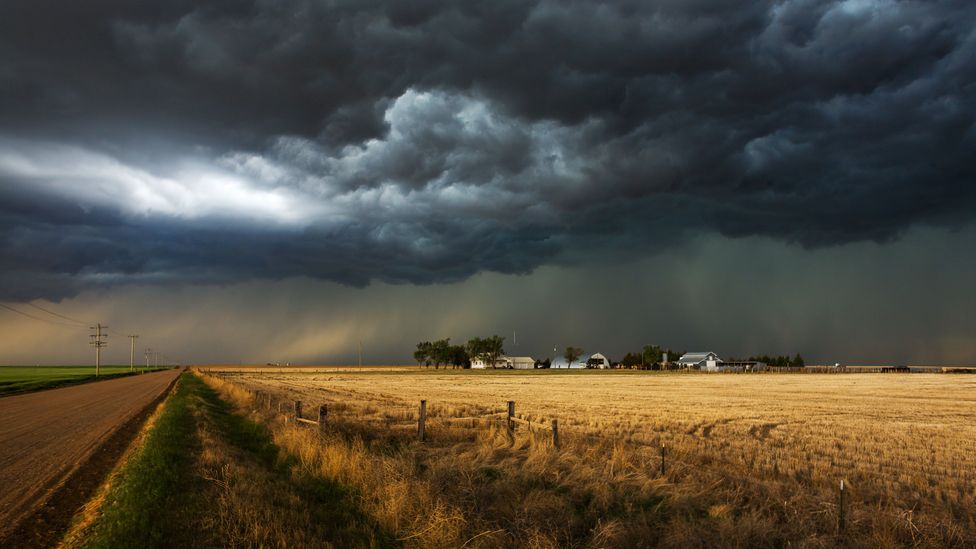I travel the world capturing fleeting moments of power in diverse landscapes. From melting icebergs at both poles to stormy states across the US, my images showcase the beauty and fragility of nature. I began storm chasing after my daughter, eight years old at the time, suggested it might be of interest while we were watching the Storm Chasers TV show.
It was the light, the colour and the strange nature of the clouds themselves that drew me to actually do a web search, contact a chaser and then just three days later, find myself in a vehicle driving fast through bad weather. After that first chase week, I asked the trip leader if he had any other spaces available and he asked me if I could drive. Then he hired me on the spot, and I officially became a professional chaser.
We would chase as far south as Texas and as far north as the Dakotas. We stayed mostly in the Great Plains but sometimes found ourselves as far west New Mexico. It was for a long time something I enjoyed doing. But after eight years I had had my fill. My book The Big Cloud is an opus to that time.
(Credit: Camille Seaman)
I wasn’t prepared for just how overwhelming an experience chasing can be. This storm in Kansas was visceral and multisensory: the smell of the charged particles, the sweetness of the grass, the scent of the pavement just before it rains, the sight of the wind blowing through cornfields. Not to mention the colours of the clouds and the light of the sky and the lightning. It was all so beautiful, so awesome and so humbling at the same time.

(Credit: Camille Seaman)
When I’m storm chasing, I feel a sense of belonging. Not because I’m photographing, but because I am present and realise that our experience as humans on this planet is limitless. Everything is interrelated. The storms provide vital water and nutrients to the very fertile plains. Something about being there as a witness to this incredible force, this elemental force of vortex energy, reminds me that I am part of this great interconnection.

(Credit: Camille Seaman)
I like images that don’t look overworked or manipulated, such as this one I took in Bartlett, Nebraska. The storm is already so amazing, there’s no need to accentuate it. I look for images that capture the structure and compositional balance and have a sensitivity to colour and light. When you get the image, you feel it.

(Credit: Camille Seaman)
Supercell storms, like this one near Browerville, Minnesota, can be 50 miles wide, so it’s almost impossible to fit that into a 24mm lens on a full-frame camera, and there’s no time to set up a tripod. Clouds are a little forgiving to photograph because they are soft shapes with no hard edges, but it’s very dark. A lot of my images are taken with a wide aperture to let the most available light in. When photographing storms, my advice would be to have both a long lens (telephoto) as well as a wide-angle lens.

(Credit: Camille Seaman)
Whenever we pulled into a town, inevitably we’d stand out as we’d have storm chasing equipment on our car. People either saw us as a bad omen or they’d say, “Is it coming our way?”. There is nothing more frightening than hearing those storm sirens go off. You have all this warm, moist air being sucked into the plains, you have rotating clouds. You can feel the warm air against your back, being pulled into the storm.

(Credit: Camille Seaman)
I grew up always knowing to respect nature and its power. At no point during this storm in Presho, South Dakota, did I feel brazen, like I’m invincible. At the same time, in storm chasing, you want to stay on the chasing side. You don’t want to become chased. That can pivot very quickly. As careful as you want to be, sometimes that’s irrelevant.

(Credit: Camille Seaman)
Once, after determining we weren’t in danger, we decided to stay put while a massive rotating cloud known as a low precipitation mesocyclone passed overhead of Lodgepole, Nebraska. It looked like a spaceship. It was one of the few times where I didn’t know what to do. Anywhere you looked, it was unreal. The cloud was so large it occupied the entire visual space. I needed a bigger lens. You couldn’t make one wide enough.

(Credit: Camille Seaman)
Storm chasing isn’t for everyone. When Tim Samaras (one of the US’ most respected and safety-conscious chasers) died in the 2013 El Reno tornado (pictured above), that storm felt like a wake-up call. I tried to chase the following year, but when we were out there, it was like I had lost my nerve. I missed a lot of great opportunities because I wouldn’t get close enough. I could feel that I was done.
But what I learned was that storm chasing offers an insight into some of the most powerful and beautiful forces on our planet. However, you must have immense respect and common sense. Don’t chase on your own. Find responsible, vetted tour leaders. Most of all, be safe out there.
Camille Seaman is an American photographer who applies portraiture strategies to capture the changing natural environment.Many of her photographs focus on the natural world, including icebergs and clouds.
—
Join more than three million BBC Travel fans by liking us on Facebook, or follow us on Twitter and Instagram.
If you liked this story, sign up for the weekly bbc.com features newsletter called “The Essential List”. A handpicked selection of stories from BBC Future, Culture, Worklife and Travel, delivered to your inbox every Friday.
